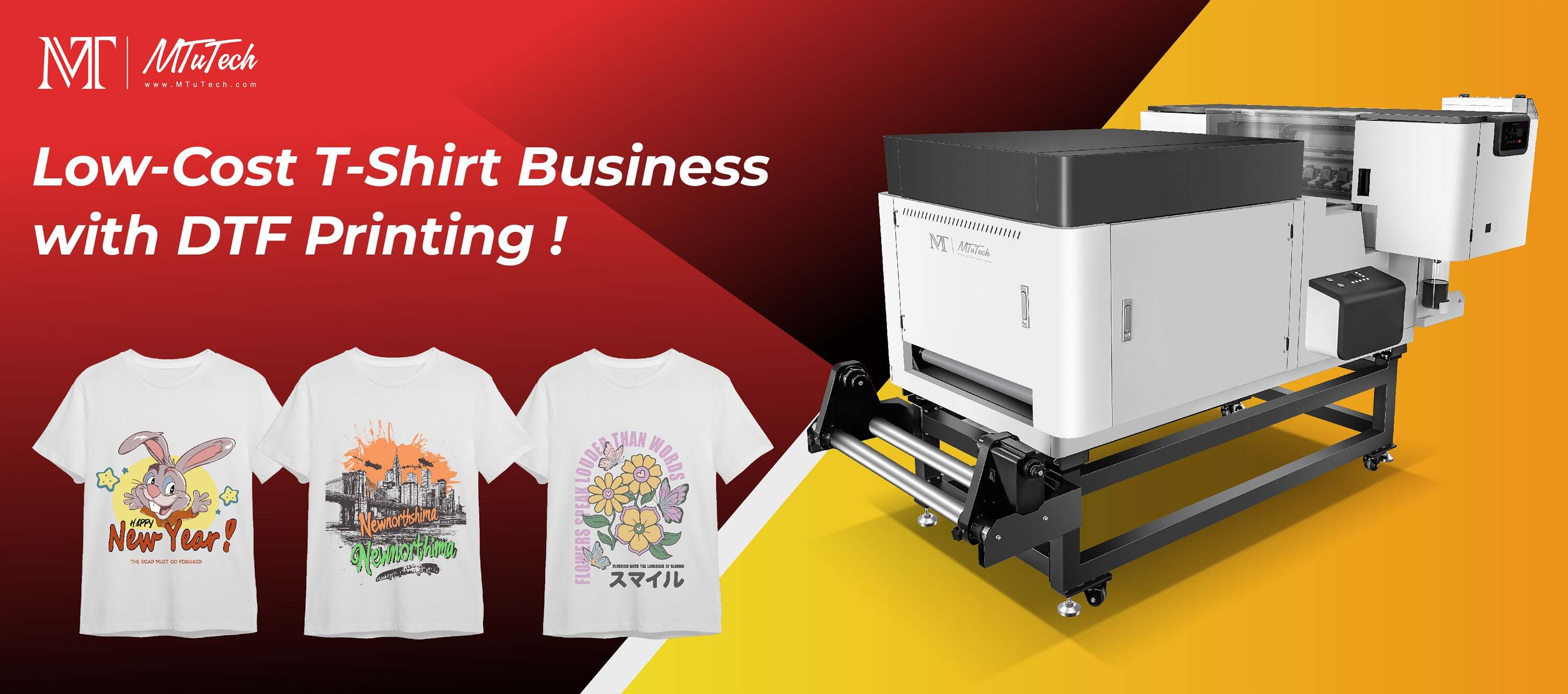Introduction
Direct to Film (DTF) printing has emerged as a revolutionary technique in the printing industry, especially for apparel and fabric designs. With its capability to produce vibrant, high-quality prints on various materials, DTF printing is gaining traction among businesses and hobbyists alike. However, one of the most pressing questions that arise in this context is: How fast can a DTF printer print? In this blog post, we will delve into the speed and efficiency of DTF printers, exploring factors that affect performance and how to optimize printing processes.
Understanding DTF Printing Technology
DTF printing is a process that involves printing designs onto a special film using specialized inks. The printed design is then transferred onto a fabric using heat and pressure. This method not only supports vibrant colors but also allows for intricate designs on various substrates. One of the standout features of DTF printers is their adaptability in different settings, from small home studios to large commercial operations.
The Printing Speed of DTF Printers
The printing speed of a DTF printer can vary significantly based on several factors, including the printer model, the complexity of the design, and the settings chosen for the print job. Generally, DTF printers can achieve impressive print speeds, often measured in square feet per hour (SQF/H).
Factors Affecting Speed
Printer Model: Different models of DTF printers are designed with varying specifications. High-end models typically offer faster print speeds compared to entry-level machines.
Design Complexity: Simple designs with fewer colors may print faster than intricate patterns that require more detailed work.
Ink Type: The type of ink used can also influence speed. Specialty inks may require different curing times, impacting the overall print time.
Print Settings: The resolution and quality settings chosen will significantly affect the printing speed. Higher resolution typically slows down the process.
Media Type: The type of fabric or surface being printed can also play a role in how quickly a DTF printer operates.
Average Print Speeds
On average, DTF printers can print between 30 to 60 square feet per hour. However, more advanced or commercial-grade models can achieve speeds exceeding 100 square feet per hour. This impressive performance makes DTF printing an attractive option for businesses looking to fulfill large orders quickly without compromising quality.
Comparison with Other Printing Technologies
When comparing DTF printing to other printing technologies, it is essential to consider both speed and versatility. For instance:
DTG (Direct to Garment) Printing: While DTG printers offer high-quality prints, their speeds typically range between 10 to 20 shirts per hour, making DTF a more efficient option for large-scale runs.
Screen Printing: Screen printing can achieve high volumes, but it requires time for setup and is less efficient for smaller, detailed designs. In contrast, DTF printing is faster and more flexible for various orders.
Maximizing the Efficiency of DTF Printing
To enhance the performance of a DTF printer, several best practices can be implemented:
1. Optimize Printer Settings
Adjusting settings like resolution, speed, and color saturation can significantly streamline the printing process. For bulk orders, consider using lower resolutions to speed up print times while still maintaining acceptable quality.
2. Regular Maintenance
Keeping the printer well-maintained ensures consistent performance. This includes regular cleaning of print heads, replacing old inks, and performing calibration checks to avoid downtime caused by malfunctions.
3. Use High-Quality Materials
Investing in high-quality DTF films and inks can not only improve print quality but also enhance speed. Inferior materials may require multiple passes or additional curing time, slowing down the process.
4. Streamline Workflow
Organizing workflow efficiently can reduce turnaround times. Utilize print queues and batch processing for similar designs to maximize printer utilization.
Real-World Applications and Use Cases
DTF printers are utilized across various industries, from fashion to promotional products. Here are a few notable applications:
Custom Apparel: Clothing brands can quickly produce customized shirts, hoodies, and other garments with unique designs.
Merchandising: DTF printers are perfect for creating merchandise for events like concerts or festivals, enabling quick production and delivery.
Promotional Items: Companies can decorate promotional items like bags and hats with intricate designs in a short time span.
Conclusion
In conclusion, DTF printers combine speed and quality, making them a game-changer in the printing industry. Their ability to produce high-quality prints at impressive speeds can benefit businesses looking to scale their operations and deliver customized products promptly. By understanding the factors affecting speed and implementing best practices, you can maximize the efficiency of your DTF printing setup. If you're looking to invest in cutting-edge printing solutions, explore our high-quality DTF printers here and take your printing capabilities to the next level.
FAQ
What is the average speed of a DTF printer?
The average printing speed of a DTF printer ranges between 30 to 60 square feet per hour, with advanced models exceeding 100 square feet per hour.
How does DTF printing compare to DTG printing in terms of speed?
DTF printing is generally much faster than DTG printing. While DTG printers typically produce around 10 to 20 shirts per hour, DTF printers can print multiple designs on various items concurrently at a higher volume.
Can I improve the printing speed of my DTF printer?
Yes, by optimizing printer settings, using high-quality inks and films, maintaining regular printer upkeep, and streamlining your workflow, you can enhance the printing speed of your DTF printer.
Is DTF printing suitable for high-volume production?
Absolutely! DTF printing is ideal for high-volume production due to its impressive printing speeds and ability to produce vibrant, high-quality prints on various fabrics.
What maintenance does a DTF printer require?
Regular maintenance includes cleaning the print heads, ensuring that ink cartridges are replaced when needed, and performing calibration checks to keep the printer in optimal working condition.

